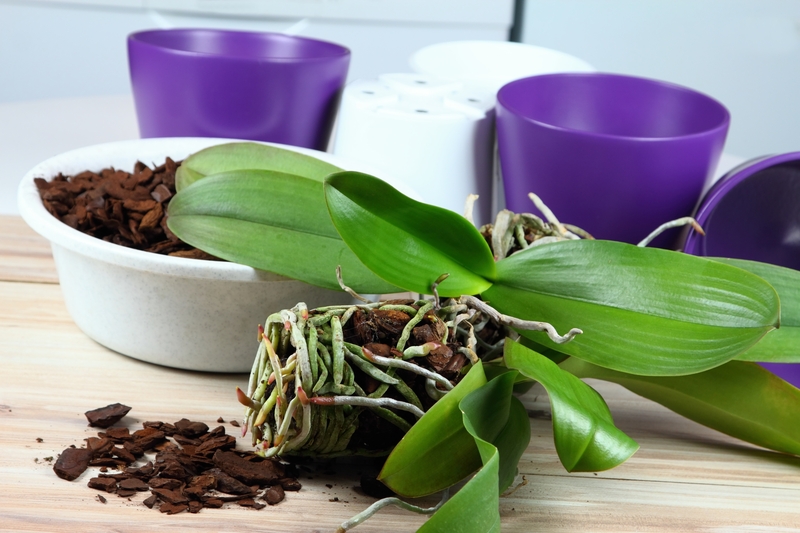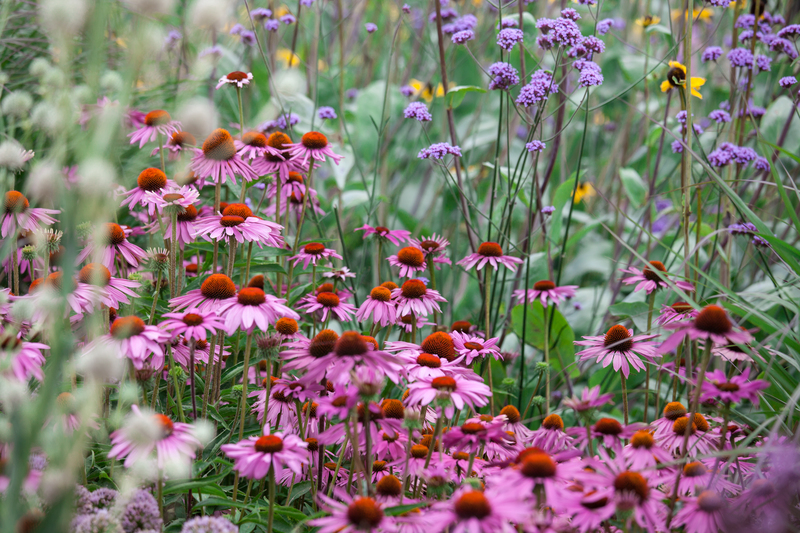The Ultimate Guide to Drought-Proofing Your Lawn in Hot Summer Months
Is your lush green yard turning brown every summer? High heat and persistent drought conditions challenge homeowners everywhere, but you can take action to save your grass and landscape. With the right strategies, you can create a beautiful, resilient, and water-efficient lawn--even through the longest dry spells.
In this comprehensive, SEO-optimized guide, you'll discover proven steps to drought-proof your lawn for hot weather, learn essential lawn care strategies, and find water-wise tips to keep your yard thriving.
Why Drought-Proofing Your Lawn Matters
Extreme summers are becoming more frequent. Climate change, water restrictions, and soaring temperatures can stress grasses beyond recovery, killing roots and inviting pests. As a result, it's not just about aesthetics--a healthy lawn helps:
- Reduce soil erosion and runoff
- Improve air quality by filtering pollutants
- Cool your home and neighborhood through evapotranspiration
- Increase property value
Let's get right into the ultimate steps you can take to drought-proof your lawn and maintain its green beauty through the hottest summer months.

Step 1: Choose the Right Drought-Resistant Grass Varieties
Not all lawns are created equal. The foundation of a drought-resistant lawn starts with planting the best grass species for your local climate. Certain grasses are bred to withstand prolonged dry spells, requiring less water while retaining vibrance.
Top Drought-Tolerant Grass Types
- Bermudagrass: Thrives in full sun and heat, requires minimal irrigation once established
- Zoysiagrass: Dense turf, low growth habits, and excellent drought recovery
- Buffalograss: Native to North America, requires as little as half the water of traditional lawns
- Tall Fescue: Deep-rooted and cool-season, modern varieties offer improved drought resistance
- St. Augustinegrass: Heat-loving and shade-tolerant, popular in southern regions
Consult with your local extension office, landscaper, or garden center for the top-performing grass seed or sod for your region's unique climate patterns.
Step 2: Soil Preparation for Drought-Proof Lawns
The secret to healthy, drought-tolerant lawns isn't just above ground. Good soil structure and organic content help moisture retention and promote healthy root development.
How to Get the Soil Right
- Test your soil using a home kit or lab service. Identify pH, sand, silt, clay, and nutrient levels.
- Add organic matter. Mix compost, composted manure, or leaf mold into the top 3-6 inches.
- Improve drainage. If your soil is heavy clay, mix in sand and gypsum; for sandy soil, add compost for water retention.
- Aerate annually. Use a core aerator each spring or fall to reduce soil compaction--helping roots penetrate deeper for moisture.
Healthy soil is like a sponge--holding water for your roots and preventing runoff during rain and irrigation.
Step 3: Smart Watering Strategies for Summer Lawns
Water efficiency is crucial for an established drought-proof lawn. Overwatering leads to shallow roots and wasted water, while underwatering leads to stress. Achieving balance is key.
Tips for Efficient Lawn Watering
- Water deeply, but infrequently. Apply 1"-1.5" per week in 2-3 sessions. This mimics natural rain and encourages deep roots.
- Water early in the morning (4-8 a.m.) to reduce evaporation and fungal growth.
- Adjust sprinklers for even coverage. Prevent puddling or missed patches that could become brown.
- Use soaker hoses, smart irrigation controllers, or drip systems. These minimize waste and target roots efficiently.
- Follow local water restrictions and adapt your schedule if conditions change.
Avoid daily, shallow watering--which causes shallow roots, requiring even more irrigation in hot conditions.
Step 4: Optimal Mowing Practices in Hot Weather
How you mow your lawn can have a dramatic impact on drought tolerance. Proper mowing helps your grass stay resilient and moisture-retentive.
Best Mowing Techniques for Drought-Proof Lawns
- Mow high. Set your mower to leave grass 3-4 inches tall. Taller blades shade the soil and support deep roots.
- Sharpen blades frequently. Dull blades tear leaves instead of slicing, leading to brown tips and increased water loss.
- Never cut more than 1/3 of the blade at a time. This avoids shocking the grass and preserves root mass.
- Leave grass clippings (mulching). Clippings decompose, returning nutrients and helping to retain soil moisture.
Step 5: Effective Mulching to Conserve Moisture
Mulching does wonders for your drought-proof lawn and landscape beds. It keeps roots cool, conserves water, and inhibits weed competition.
Top Mulching Materials for Moisture Retention
- Grass clippings (as noted above)
- Compost or well-rotted manure for nutrition and water holding
- Shredded leaves or wood chips in garden beds
- Pine needles (great for acid-loving plants and reducing evaporation)
Apply mulch 1-2 inches deep on bare spots, flower beds, and around tree roots--but avoid direct contact with grass crowns to prevent rot.
Step 6: Fertilize Wisely for a Drought-Proof Lawn
Nutrient-rich lawns photosynthesize efficiently and recover from drought stress. However, fertilizing during peak heat can actually damage grass. Instead, feed your lawn strategically:
- Fertilize in late spring and early autumn--not during drought or extreme heat.
- Use slow-release, organic fertilizers that build soil health over time.
- Minimize synthetic high-nitrogen fertilizers in summer; they may burn grass and stimulate thirsty, shallow-rooted growth.
Healthy, properly fed grass is much more likely to survive and recover from drought.
Step 7: Embrace Water-Smart Lawn Design
Sometimes, less lawn is more. Rethink your landscape design to use grass only where it makes sense--balance with drought-resistant groundcovers, shrubs, and decorative gravel for a truly water-wise yard.
Consider These Water-Efficient Alternatives
- Xeriscaping: Design with native, drought-hardy plants and minimal turf
- Groundcovers: Lippia, thyme, sedum, or clover--require little mowing and less water
- Mulched beds: Accent with rocks, mulch, and low-maintenance perennials to reduce high-water grass areas
Smart design reduces maintenance while maximizing curb appeal--and cuts your water bills, too!
Step 8: Smart Lawn Recovery After Drought
Even the most resilient lawns can show symptoms of drought stress. Don't lose hope--even brown grass may only be dormant, not dead.
How to Revive a Drought-Stressed Lawn
- Resume deep irrigation when permitted--avoid overwatering all at once.
- Aerate compacted soil to encourage root growth and water penetration.
- Reseed bare or thin patches with drought-tolerant varieties.
- Reapply organic mulch and compost to restore nutrients and moisture retention.
- Avoid fertilizing right after drought; allow recovery first, then feed gently.
Patience is key--many grasses recover remarkably after just a few weeks of proper care and the return of rain or irrigation.
Step 9: Common Mistakes to Avoid When Drought-Proofing Your Lawn
- Overwatering--leads to shallow roots, disease, and wasted water
- Ignoring soil health--poor soil can never sustain drought-proof grass
- Frequent shallow mowing--results in scalped, stressed turf
- Applying fertilizer during heat waves--can burn and kill grass
- Neglecting local restrictions or guidelines--risks fines and community water shortages
Avoiding these pitfalls is critical for a truly resilient summer lawn.
Bonus Tips: Eco-Friendly Products for Drought-Resistant Lawns
Eco-conscious homeowners can take drought-proofing to the next level using these products:
- Soil wetting agents or hydrogels--improve water penetration and retention
- Smart irrigation controllers--automatically optimize watering based on weather & soil moisture
- Organic mulches and compost teas--nourish roots naturally
- Rainwater collection--use barrels or cisterns to irrigate sustainably
- Native seed mixes--contain adapted species with superior drought resistance
Embracing the latest lawn care technology can save water, money, and time while supporting your local environment.

Frequently Asked Questions about Lawn Drought-Proofing
Q: Can I have a green lawn without daily watering in summer?
A: Yes! Deep, infrequent watering using the right grass types and healthy soil promotes drought-proof lawns that stay green longer and recover quickly when rains return.
Q: Will grass come back after it turns brown in drought?
A: Most drought-tolerant grasses enter dormancy, not death. With resumption of rainfall or consistent irrigation, many lawns make a full recovery. Quick intervention boosts survival chances.
Q: Are there alternatives to traditional turf grass?
A: Absolutely! Native groundcovers, xeriscape gardens, and clover lawns are all viable and beautiful drought-friendly options, requiring far less water than standard lawns.
Conclusion: Build a Lawn that Stays Beautiful and Resilient All Summer
With proper planning, drought-proofing techniques, and a commitment to water-smart lawn care, anyone can maintain a healthy, attractive yard during hot summer months. From choosing the right grass types and building healthy soil to smart watering, mowing, and fertilizing practices, this guide gives you the tools to succeed.
Don't let droughts defeat your dreams of a lush lawn--arm yourself with these expert strategies and enjoy green success all year long!
Ready to transform your summer lawn into a water-wise oasis? Start now by selecting drought-resistant grass, feeding your soil, and adopting smart watering techniques. Your eco-friendly, low-maintenance, and drought-proof lawn awaits!